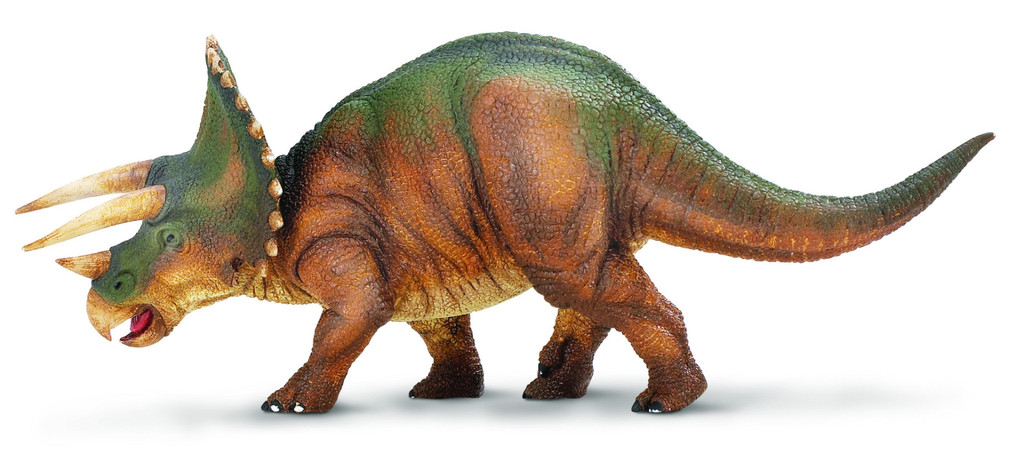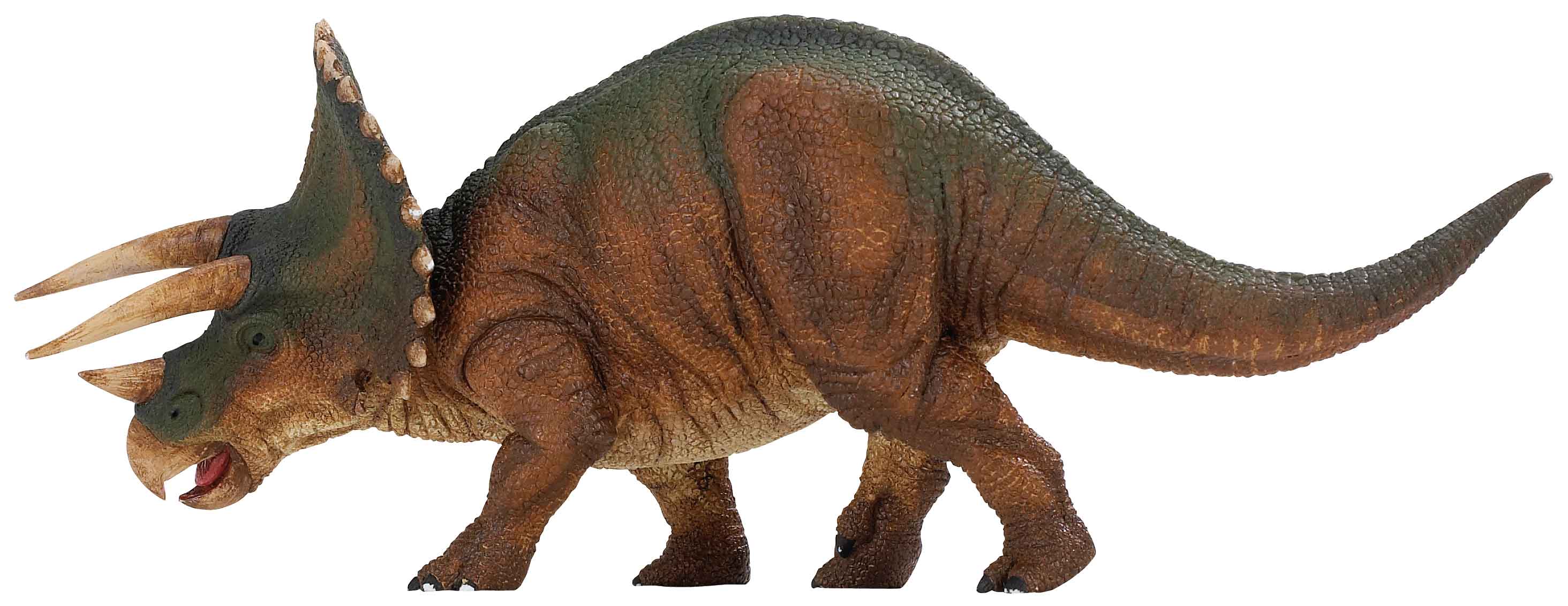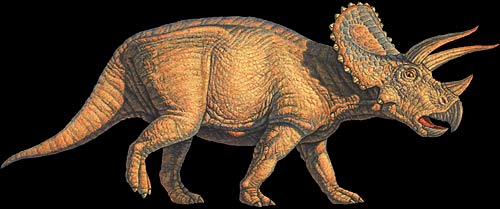
Triceratops became the first genus of horned dinosaur
known to science when its skull was
described by Othniel C. Marsh in 1889. The remains
of its horns were originally attributed to the
high-horned bison (Bison alticornis), and its
occipetal condyle was originally named Ceratops
montanus. In his preliminary description of the
skull, Marsh named its owner Ceratops horridus
and felt it was related to the stegosaurs. After the
skull had been cleaned, Marsh changed the name
to Triceratops horridus. Thirteen species of Triceratops
have been described, but only one (or possibly
two) species actually occurred in nature.
Triceratops lived in western North America at the
end of the Cretaceous, between 68 and 65 million
years ago.
Characteristics
The most characteristic feature of the animal was
its large, V-shaped head which terminated in an
elongate frill. The skull can be more than 6 feet long
(2.2 meters). Only whales have larger skulls. The
frill allowed an animal to recognize members of the
same species as well as members of the opposite
sex. Since Triceratops had color vision, the frill was
probably pigmented, and its ornamentation was
designed for visual display and not for protection
or to serve as a point of attachment for the jaw muscles.
The head bore three horns that functioned in
display, ritual combat, and protection frompredators.
One short horn arose over the nose, and two
others, the longest, arose over the eyes. Males had
large, erect horns while females had smaller, somewhat
forward-pointing horns. The large number
of skulls that have been found indicates that
Triceratops was an abundant, gregarious species.
No complete skeletons are known. A composite,
presumably female, skeleton on display at the
Science Museum of Minnesota is 26 feet (7.9 meters)
long and 9 feet, 7 inches (2.9 meters) high.
With a weight of 8.5 metric tons (9.4 tons),
Triceratops was three times heavier than a rhinoceros.
The shin bone (fibia) was notably shorter
than the thigh bone (femur). The size relationship
between these two bones is the reverse of what is
seen in animals that are fast runners. Evidence
from ceratopsian trackways and the anatomy of
its shoulder (the hind legs were located directly
below the hips while the forelimbs sprawled outward and were not located below the shoulders)
also indicates that Triceratops was rather slow. Its
running speed has been estimated at about 4.2 kilometers
per hour (2.6 miles per hour).
Triceratops Facts
Classification:
Kingdom: Animalia
Subkingdom: Bilateria
Phylum: Chordata
Subphylum: Vertebrata
Class: Reptilia
Subclass: Dinosauria
Order: Ornithischia (bird-hipped dinosaurs)
Suborder: Ceratopsia (beaked dinosaurs)
Family: Ceratopsidae (horned dinosaurs)
Subfamily: Chasmosaurinae (horned dinosaurs with long
frills)
Genus and species: Triceratops horridus
Note:Anumber of competing classification schemes exist
and will probably continue to do so in the future.
Geographical location: All large, horned, frilled dinosaurs
were confined to western North America from
present-day Denver, Colorado, to southern Alberta,
Canada, between the western interior seaway to the
east and the forming Rockies to the west
Habitat: Restricted to the arid, coastal, lowland plain
Gestational period: Although no eggs have been found,
Triceratops must have been an egg layer; the frequency
of egg laying, the time it took for the eggs to
hatch, and the reproductive life span of the adults
are unknown
Life span: Based on mammalian models, sexual maturity
would be reached after ten years and the life
span was probably in excess of one hundred years
Special anatomy: Rostral and predentary bones combined
to give the snout its parrotlike appearance in
side view; the occipital condyle projected off the back
of the skull and gave the head a high degree of movement;
each tooth had two roots, with the crown of
each lower tooth in the dental battery fitting into the
notch formed by the two roots of the tooth above it
Other popular Animals
Photo Gallery of - Triceratops








 Animalia Life
Animalia Life